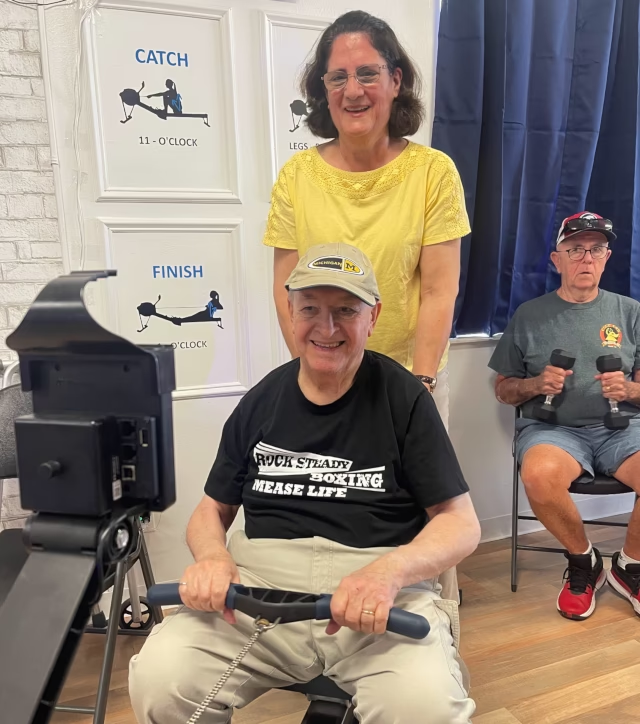
Rowing: Adaptable for All Ages and Fitness Levels
Author: Elaine Lawrence
Date: September 8, 2025
Rowing stands out as a uniquely versatile exercise, adaptable to all ages and fitness levels, making it a cornerstone of inclusive fitness. Its adjustable resistance allows beginners to start gently, seasoned athletes to push their limits, seniors to stay active with low-impact movement, and young athletes to build strong foundations for their sports. From first-time exercisers to lifelong fitness enthusiasts, rowing meets you where you are, offering a full-body, low-impact workout that promotes strength, cardiovascular health, and mental well-being. This adaptability, combined with its accessibility, positions rowing as an ideal exercise for everyone, aligning with Google’s EEAT (Experience, Expertise, Authoritativeness, Trustworthiness) principles. Let’s explore why rowing’s versatility makes it a fitness solution for all.
A Workout Tailored to You
Rowing’s greatest strength lies in its scalability. Modern rowing machines, like the Concept2 or Hydrow, feature adjustable resistance, allowing users to customize intensity instantly. Beginners can start with low resistance for a gentle introduction, focusing on technique—leg drive, core engagement, and arm pull—while building confidence. Seasoned athletes, meanwhile, can increase resistance or incorporate high-intensity interval training (HIIT) to challenge endurance and power. This flexibility ensures that rowing accommodates individual fitness levels, making it accessible to everyone from novices to elite competitors.
For example, a beginner might row for 15 minutes at low resistance, burning 100–200 calories while learning proper form. An advanced athlete could tackle a 30-minute HIIT session, burning 300–500 calories and boosting aerobic capacity. According to the American College of Sports Medicine, exercises that allow for progressive intensity adjustments, like rowing, support long-term adherence and reduce injury risk, making it ideal for sustained fitness progress.
Low-Impact Benefits for Seniors
Seniors particularly benefit from rowing’s low-impact nature. Unlike high-impact exercises like running, which can stress joints, rowing’s smooth, gliding motion minimizes strain on knees, hips, and ankles. This makes it a safe choice for older adults looking to maintain mobility, strength, and cardiovascular health. A 2021 study in the Journal of Aging and Physical Activity found that low-impact aerobic exercises like rowing improve balance and coordination, reducing the risk of falls—a critical concern for aging populations.
Rowing also strengthens the core and back, improving posture and counteracting the effects of sedentary lifestyles. Programs like USRowing’s masters rowing initiatives cater specifically to seniors, offering tailored coaching and adaptive equipment for those with mobility limitations. Whether in a gym or through a community rowing club, seniors can row at their own pace, enjoying both physical and social benefits.
Building Foundations for Young Athletes
For young athletes, rowing lays a strong foundation for sports performance. Its full-body engagement—activating over 85% of muscles, including legs, core, back, and arms—builds strength, endurance, and coordination that translate to disciplines like soccer, swimming, or track. Rowing’s low-impact nature allows young athletes to train rigorously without risking overuse injuries, which are common in high-impact sports. The Journal of Sports Sciences (2020) notes that cross-training with low-impact exercises like rowing enhances athletic development while protecting growing bodies.
Rowing also teaches discipline and focus, as the rhythmic motion requires concentration on technique. Junior rowing programs, offered by clubs worldwide, introduce young athletes to the sport, fostering teamwork and resilience through crew rowing or competitive ergometer challenges.
Inclusivity for All Fitness Levels
Rowing’s accessibility extends to its inclusivity across fitness backgrounds. First-time exercisers can start with short, low-intensity sessions, guided by online tutorials or apps like Hydrow’s virtual classes. Lifelong fitness enthusiasts can use rowing for cross-training, enhancing performance in other activities like running or cycling. Adaptive rowing programs, supported by organizations like USRowing, ensure that individuals with disabilities can participate, using specialized equipment to accommodate diverse needs.
The learning curve is approachable, with basic techniques easily mastered through practice. Gyms, fitness studios, and home rowing machines make the sport widely available, while on-water rowing clubs offer community-driven options. Connected fitness platforms, such as Concept2’s online leaderboards, add motivation through performance tracking and virtual competitions.
Mental and Long-Term Health Benefits
Rowing supports mental health across all ages. Its rhythmic motion promotes mindfulness, reducing stress and boosting endorphins, as noted in a 2019 study in the Journal of Sports Sciences. For seniors, the social aspect of rowing clubs fosters community, combating loneliness. Young athletes gain mental toughness, while beginners find a sense of accomplishment in tracking metrics like distance or stroke rate.
For long-term health, rowing’s low-impact nature supports lifelong fitness. Regular sessions improve cardiovascular health, boost metabolism, and enhance posture, aiding in weight management and mobility. Its versatility ensures that workouts remain engaging, encouraging adherence over time.
Why Rowing is for Everyone
Rowing’s adaptability makes it a standout choice for fitness. Its scalable intensity, low-impact design, and full-body engagement cater to beginners, seniors, young athletes, and fitness enthusiasts alike. To start, explore local gyms, rowing clubs, or home machines. Resources like USRowing.org or fitness apps provide guidance on technique and workouts. Rowing meets you where you are, offering a path to better health and performance for all.